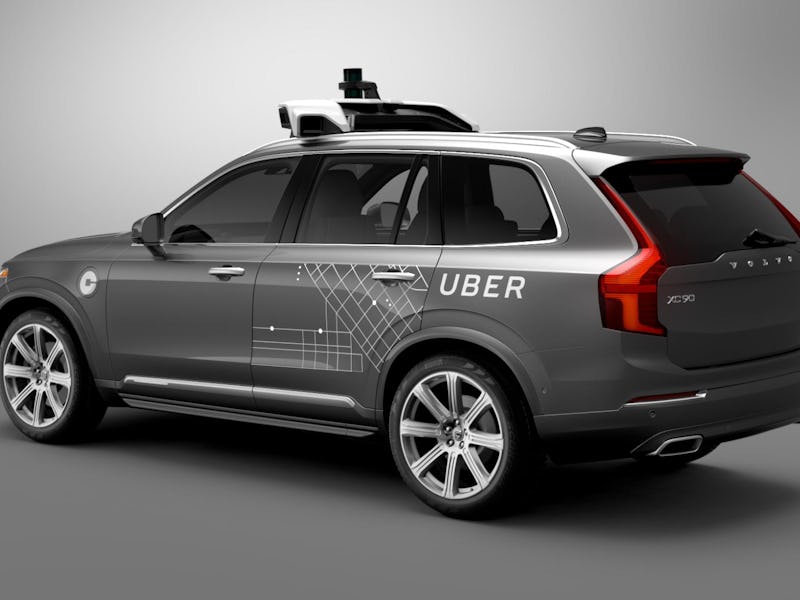Uber's Self-Driving Cars Will Pick Up Passengers This Month
Don't worry, they'll still have human drivers inside.

Shortly after Uber finally admitted it was developing its own self-driving vehicles, the company has revealed that its modified Volvo XC90s will start picking up passengers in Pittsburgh this month.
Bloomberg reports that Uber’s self-driving vehicles will be assigned to random passengers who will get free rides as compensation for their help teaching the autonomous SUVs how to drive.
Not that those passengers will be in any danger. Each self-driving vehicle will have two humans — one ready to take the wheel, and the other wielding a laptop so they can analyze data from the trip — in their front seats at all times. This is a learning exercise for Uber, not a sign that these vehicles are ready for prime time.
In addition to teaching these self-driving vehicles how to navigate city streets, this road test will help educate Uber’s customers about autonomous cars. Uber has added a tablet to the back seat of each vehicle that will help explain to the randomly selected passengers why their Uber has that weird thing on its roof.
The tablet will also explain to passengers not to interact with the people in the front seat. “The goal is to wean us off of having drivers in the car,” Uber engineering director Raffi Krikorian told Bloomberg, “so we don’t want the public talking to our safety drivers.” That will likely be as awkward as it sounds.
It’s no surprise that Uber wants to push self-driving vehicles. The company has a rocky past with drivers and will soon face competition from Ford’s own self-driving passenger service that supposed to debut in five years.
And that’s just small passenger vehicles. Uber will also have to compete with mass transit systems like a self-driving bus that’s already on Finland’s roads and a futuristic subway system planned to debut in New York within five years.
Uber faces problems from all angles. It relies on drivers in an abusive relationship neither side enjoys; it operates in the crowded ride-sharing space; and it depends on people taking private vehicles instead of public transit. Taking these vehicles out of the lab and onto the streets brings it closer to solving all those problems.